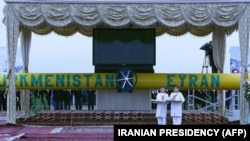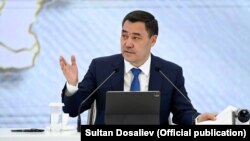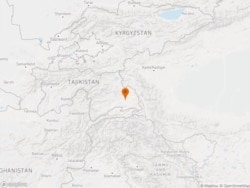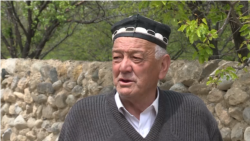
Turkmenistan might be getting one of its natural-gas customers back.
Turkmen Foreign Minister Rashid Meredov was in Tehran from October 26-28 for a meeting of the foreign ministers from the countries bordering Afghanistan plus Russia.
Meredov used the opportunity to meet with Iranian officials to discuss a very important bilateral issue – Iran's importing natural gas from Turkmenistan.
After meeting with Meredov, Iranian Oil Minister Javad Owji reportedly said his country is interested in resuming the imports that Turkmenistan cut in early 2017.
Possible breakthrough?
The timing could not be better for Turkmenistan, as the country has been experiencing several years of severe economic problems.
The possible breakthrough with Iran comes as Turkmenistan is sending representatives to Kabul to try to breathe life back into the Turkmenistan-Afghanistan-Pakistan-Afghanistan (TAPI) natural-gas pipeline project.
The difference is that very little of TAPI has been built and financing remains a huge question, whereas there are already two pipelines connecting Turkmenistan to Iran -- the older (1997) Korpeje-Kordkuy pipeline with a capacity of some 8 billion cubic meters (bcm) per year, and the newer (2010) Dauletabad-Sarakhs-Khangiran pipeline, which has an annual capacity of 12 bcm.
In the early days of Turkmenistan’s economic woes, the government showed its desperation by announcing in late 2016 that Iran owed some $2 billion for gas it had received in the winter of 2007-2008. It added that if it was not paid before 2017 then Turkmenistan would cut off supplies.
Iran said the debt given by Turkmenistan was far higher than the $500-$600 million that Tehran said it owed and decided not to pay.
So Turkmenistan ceased shipping gas to Iran on January 1, 2017.
Iran is rich in natural gas, but its big fields are in the south of the country and the north has poor connections to the domestic gas-pipeline network.
So Turkmen gas is very important for northern Iran, something that Turkmen authorities were banking on in late 2016 after they lost Russia as a customer earlier in the year.
Turkmenistan didn't think Iran would be able to do without its natural gas.
Nearly five years later there is still no gas flowing from Turkmenistan to Iran.
But if Owji’s remarks are genuine, that could change soon.
Owji -- previously the head of Iran's national gas company -- said “positive negotiations were held to settle the debt" and that talks are ongoing.
He added that “the debt to the Turkmen side will undoubtedly be settled and we are determined in this regard.”
Flour for gas?
The two sides took their dispute to international arbitration and, in June 2020, there were reports that the court ruled in favor of Turkmenistan, though Iran said neither side had won.
Settling the debt is only the first step needed for Turkmen gas to resume flowing to northern Iran.
Iran had previously paid for Turkmen gas by barter, with the Turkmen government increasingly demanding cash instead.
Considering Turkmenistan’s dire economic situation and shortages of basic goods such as cooking oil, flour, and sugar, barter might be acceptable to Ashgabat for the time being.
It appears the chances are good that Turkmenistan will resume supplying gas to Iran – and with that a warming of bilateral ties as well.
Turkmen President Gurbanguly Berdymukhammedov discussed resolving the gas issue with Iran with Iranian President Ebrahim Raisi on the sidelines of the Shanghai Cooperation Organization summit in Dushanbe in September.
Also announced during Meredov’s visit to Tehran was a more than decade-old n agreement for Iranian contractors to build a 400 kV power line from the Turkmen city of Mary to the Iranian border town of Sarakhs.
Turkmenistan has continued to export electricity to Iran even after turning off the gas pipelines.
Afghanistan also gets electricity from Turkmenistan but, since the mid-August takeover by the Taliban, it is already clear the Taliban authorities will be unable to pay -- at least in full -- for the Turkmen electricity they are importing.
A new power line to Iran could offset the losses in revenue for electricity exports to Afghanistan, though Iran has also been paying for its Turkmen electricity by barter.
Turkmenistan and Iran also reached a new agreement on railway traffic, and Iran promised to make available a zone at its Persian Gulf port at Shahid Rajaee for the transit of Turkmen goods through Iran.
Iranian officials also announced on October 17 that all four border crossings with Turkmenistan -- Sarakhs, Lotfabad, Bajgiran, and Incheh Borun -- had been reopened, a move that will improve bilateral trade.
This is all very welcome news for Turkmen authorities who have been struggling for years to find new sources of revenue to help quell its economic meltdown.













